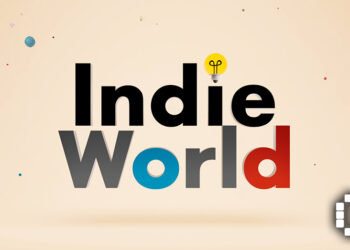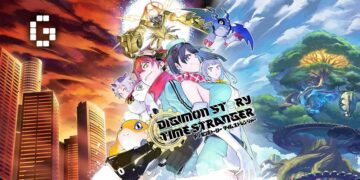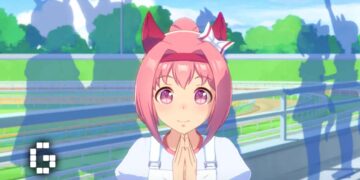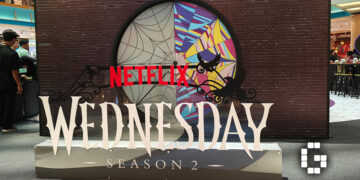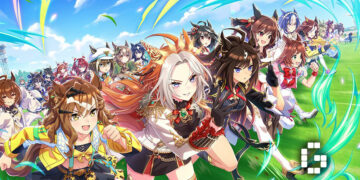Arguably one of the year’s biggest releases, Cyberpunk 2077, is finally here. After years of promises, crunch and delays, the triple-A corporate juggernaut about futuristic rebellion is finally out, and thanks to our friends at CD Projekt Red, we got to try our hands on it.
The game puts you in the shoes of V- a character whose entire background and characteristics are entirely up to you. You live in Night City, where you will interact with its host of colorful denizens as you climb your way to the top of Night City.
Due to the massive size of this game we haven’t hit a part of the game’s story worth commenting on, so we won’t be talking too much about specific characters or the game’s overall plot. Rather, enjoy this first impressions of the world of Night City.
We Built This City on Crunch And Roll
At first glance, Night City is beautiful. It incorporates a lot of the same artistic influences the Cyberpunk tabletop had, with its western-Japanese hybrid culture.

It’s really cool, and the early areas especially feel densely packed full of people and interesting things to look at. At first glance it’s tempting to say that the whole “futuristic Japan hybrid” is overplayed, but again you have to remember that that wasn’t the case back when the tabletop came out. In that sense 2077’s look is merely an advancement of the original’s, and you can’t really fault it that so many other IPs since have drawn inspiration from it.
It’s also incredibly detailed in that respect, because the Japanese-styled stalls will also have culturally appropriate foods like Sushi and buns.

One thing I have to commend it on though is its lack of excessive worship of the 80s. While many of the key visual themes of the original Cyberpunk are there, the game looks very much designed of its own era. The body horror of cybernetics is way more emphasized here, with every character having techno-lines running along their bodies.
The game has six total regions, complete with all their own visual flares. This works in the story too, since they’re run by separate gangs, further helping the visual story of this place.
Of course, as a sprawling open world it’s not immune to bugs. There’s nothing particularly big to call out, but just know if you’re the type to nitpick it’ll definitely be a bother to you. That being said, there’s bound to be a Day 1 patch that might fix these issues, so your mileage may vary.
It’s helped even further by the game’s soundtrack, which combines a lot of industrial sounds with synthwave. In a way I’m glad Cyberpunk has been its own tastemaker for the genre, since people can finally stop comparing things to Bladerunner.
All in all though, I can easily see Night City being one of those big iconic RPG locations, making its way into other games as a reference in some way or another for years to come.
From Tabletop To Top Of The Charts
Despite having a first-person perspective, it’s important to note that Cyberpunk 2077 isn’t a shooter, in much of the same ways you wouldn’t call Fallout New Vegas a first person shooter. There’s gunplay, sure, but you can tell that wasn’t meant to be the meat of this game.
Instead it’s a very in-depth RPG, with a focus on the roleplaying elements of the game. I’m a huge fan of how they’ve done dialogue here, moving as far away from the four-button approach Mass Effect popularized.
Similar to the aforementioned New Vegas, your dialogue options are based on a drop down menu, with some segments even letting you look around to turn to a friend if you can get them to weigh in for you.
Naturally, these are set against the backdrop of the game’s quests. These are entirely failable, with many of them not even netting you a Game Over if you fail. Rather, instead you simply have to live with the fact that that storyline is now at an end.
I think it’s a great feature, and really helps you get in to the roleplaying aspects of the game. Sometimes you’ll simply flub a quest, and it just becomes another part of your character’s identity.
LaserQuest
The game’s missions are done for the reward of Street Cred, raising V’s reputations among the denizens of Night City.
Not all of the game’s tasks are tied to NPCs, though, as some of them will be marked on the area itself, meaning you’ll have to search around for clues related to your quest.
One of the big flaws you’ll run into is the game’s UI, which can get a little messy especially if you’re just trying to keep track of where everything is.
On top of that, the quests are purely for role-play purposes. What I mean is that unlike some RPGs, these quests won’t tell you what their rewards are, meaning you’re jumping into them to develop V’s story, rather than to get EXP or gear.
You’ll still be rewarded of course, but until wikis of this game are complete you’re not likely to find “optimal paths” any time soon. Instead, you might just want to sit back and enjoy the ride.

Driving With The Cyber-Top Down
Of course, you’re not meant to get around Night City on foot. Cyberpunk 2077 has a variety of vehicles, each full of its own character.
Similar to GTA you’ll get a garage to store all of these, and you can choose which to get out on as you head to the next mission. These can be driven in third person view to fully appreciate the car’s design, or in first person for immersion purposes.
In first person you’ll have a holographic HUD, making it so you can see the status of the car as you drive, meaning there’s no advantage to playing it either way.
A V for U
Speaking of V, the customization is pretty in-depth. You can even choose their Life Story, choosing for V to be either a Nomad, a Streetkid or a “Corpo” (Corporate-type). According to the game this opens up new opportunities for V as a character depending on their choice, which is great for the longevity of the game since you’ll always have something to go back to and try out differently.
On top of that, V can have different jobs, such as Engineer and Hacker. These can be acquired with skill points, and will open up the toolset V has.

Similar to its tabletop roots you can also raise V’s stats, which will have various in-game effects as well. Honestly, this front is where Cyberpunk 2077 really is at its strongest. It’s great to simply roleplay a denizen of Night City, and the game gives you so many tools to make sure your V is exactly the character you want them to be.
The game further assists this by removing stat requirements from weapons. With Dark Souls and New Vegas making hard stat requirements less necessary, every time I can’t pick up a gun just because my character’s apparently too stupid to perceive the concept of gun, it’s felt like an outdated relic of a game. So I’m glad that Cyberpunk 2077 has gotten with the times and decided if it’s there, you can use it.
Call Of Cyberpunk 2077 This Is Not
Remember how I said Cyberpunk 2077 is very much not an FPS? I meant it. There’s a reason the game’s official marketing puts very little emphasis on the shooting.
The shooting has this weird lack of feedback to it, making you wonder why you’re pressing buttons at all. On top of that, it falls into the huge problem all RPGs with shooter elements have in that enemies just become bullet sponges.
It also really eats into the roleplaying, since by default stealth is a way better way to play. That tends to ripple through the rest of the game, since now you’re probably going to make sure your build is better at stealth to make sure you get into as few scrimmages as possible.
There’s also melee weapons in the game, but they have a lot of the same problem, except this time they don’t consume ammo.

I think the worst part about this is that you can tell exactly why the shooting is so bad, and that’s the game’s loot system. Like every other RPG coming out, loot follows the Diablo-style tiered loot, complete with the same rarity color scheme.
Considering how much of the game is tailor-made sequences, the addition of tiered loot just feels uninspired. It would have been way better to make guns behave differently similar to how New Vegas does it with its damage types, rather than have them all tied to a big “the rarer your loot the more damage it’ll do” system.
It’s honestly just in the middle of the road right now. The game could have gone either way with either leaning more into FPS side and making what guns you use mere tools, or more into the RPG side by having things like enemy and weapon stats play more of a role in dealing with enemies, thus forcing you to keep a diverse set of tools. Instead, we got the boring middle of the road where the RPG side of the combat feels too simple and the FPS side of it feels abysmal.
Of course, the character encounters are way better, since these use more of the game’s RPG systems. Some encounters can simply me made to go away with money, the most powerful weapon in Night City.
You’re also able to use various perks to further enhance your weapons, with some rewarding headshots while others simply boost your proficiency with certain gun types.

Closing Thoughts
Overall, Cyberpunk 2077 is a great games for fans of RPGs. The deep customization is definitely the best of it’s kind this year, and its strong visual presence is also going to make sure it stays in public consciousness for a while.
That being said, outside of its marketing push to be considered an amazing game, I can’t see much of a reason for anyone who’s not interested in RPGs to give this a go. Considering mass appeal is a good chunk of Triple-A gaming, it’s definitely an oddity in that regard.
However, that’s hardly a black mark against it. After all, RPG players are used to a little jank in their combat, just ask any Fallout fan. It’s definitely a strong entry to close the year out on, and I’m sure that there’s enough groundwork here for a solid game.
All in all, the game’s looking good, and we can’t wait to finish it.
Game reviewed on PC. Review code provided by CD Projekt Red














![[EXCLUSIVE] Creative Masterminds from Gearbox Software Reveal What Makes Borderlands 4 Worth the Wait](https://cdn.gamerbraves.com/2025/07/Borderlands-4-at-Bilibili-World-2025_Interview_FI-360x180.jpg)


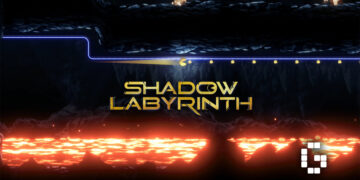

![[ASIA EXCLUSIVE] Bringing Back a Classic: Inside the Making of FINAL FANTASY TACTICS – The Ivalice Chronicles](https://cdn.gamerbraves.com/2025/06/FFT-Ivalice-Chronicles_Interview_FI2-360x180.jpg)





